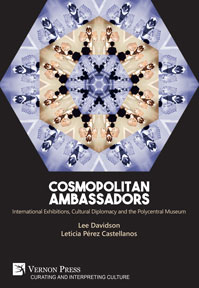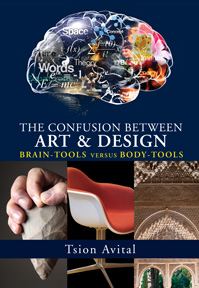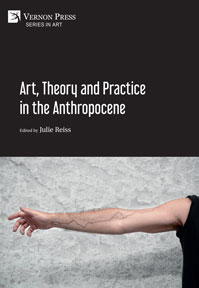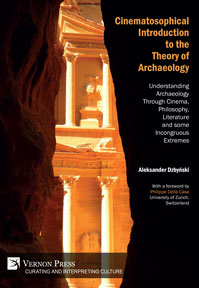Stories in Stone: Memorialization, the Creation of History and the Role of Preservation
by Emily Williams (Durham University)
Purchase this book
(click here to change currency)
I have read Emily Williams’ manuscript with unalloyed admiration. It is in more than one sense a monumental undertaking and achievement, bringing together a number of disciplines to elucidate what might at first seem a tangential or minor matter, two family tombstones marking long forgotten burials of African-Americans in 19th c. Williamsburg VA.
That the tombstones had been noticed and ignored twice in the 20th c., once in the construction of a white church on the site, (1925) and again by the Colonial Williamsburg Foundation in reworking a parking lot (1965), suggests the prevailing establishmentarian indifference.
Dr. Williams’ work is erudite, thorough, and exhaustive. She is the master of the fine and magisterial detail, ranges comfortably across a variety of disciplines, and writes with ease and command.
Her extraordinary contextualizing moves from discipline to discipline, taking into account a multiplicity of cultural, racial, historical, biographical, and theoretical considerations.
Terry L. Meyers
Professor of English Emeritus
The College of William and Mary
Inspired by the discovery of two intentionally-buried tombstones, Williams presents a thorough analysis that incorporates race, commemoration, and memory across several generations. The author illustrates how various constituencies over time interacted with - even buried - these markers in order to manipulate memory in deliberate and consequential ways.
During the mid-1800s, influential community leader Alexander Dunlop seized the opportunity to proclaim his family’s embodiment of American values as examples of his community’s potential to contribute to the American nation. This occurred during a period in which the paradox of enslavement in American democracy became unsustainable. Dunlop designed his family’s tombstones to communicate their Christian mores and American identity. The markers adroitly broadcast his aspirations for the nation’s future while employing non-threatening messaging through epitaphs, iconography, and material choice.
Williams presents an engaging narrative of memory, commemoration, and agency through object biography, demonstrating that the visibility of the tombstones and their aspirational messages were not passive reflections of the individuals memorialized, but actively communicated a vision of the future in which all Americans – even those formerly enslaved - participated. She deftly relates contemporary dialogues about Confederate monuments and memorial creation, using the Dunlop family gravestones as one case study. Through Williams’ clever, micro-historical analysis, these tombstones demonstrate both the mutability and endurance of their powerful messages over the generations.
Williams’ investigation epitomizes the potential of object biography and microhistory. "Stories in Stone" is enlightening, inspiring, and instructive. Its multidisciplinary approach has broad appeal for a variety of audiences, including those interested in anthropology, history, historic preservation, civics, conservation, linguistics, and race.
Laura J. Galke
Chief Curator
Virginia Department of Historic Resources
This is a sophisticated and highly contextualised study that places a small group of memorials in their various contexts, indicating the ways in which material culture can have complex biographies, which are not only commemorative but also seen as dangerous and subversive by some.
Although working out from very few objects, this study relates to a series of larger issues, both in terms of time and place, and theoretical and methodological issues. It is a valuable contribution to material culture studies, as well as gravestone studies and historical archaeology.
The conservation aspect is particularly welcome; conservation is often portrayed as having ethics regarding authenticity and truth to materials, but not the wider implication so of decisions around conservation (or not).
The Post-Bellum world of Virginia has a social-cultural dynamic of its own but part also of that of the South; this revisited the monument with its burial in the early 20th century. Here the micro-history and object biography combine with larger-scale forces that make the study of wide significance.
Harold Mytum
Professor of Archaeology,
School of Histories, Languages and Cultures, University of Liverpool
*Co-Winner of the Historic Preservation Book Prize 2021*
In 1866, Alexander Dunlop, a free black living in Williamsburg Virginia, did three unusual things. He had an audience with the President of the United States, testified in front of the Joint Congressional Committee on Reconstruction, and he purchased a tombstone for his wife, Lucy Ann Dunlop. Purchases of this sort were rarities among Virginia’s free black community—and this particular gravestone is made more significant by Dunlop’s choice of words, his political advocacy, and the racialized rhetoric of the period. Carved by a pair of Richmond-based carvers, who like many other Southern monument makers, contributed to celebrating and mythologizing the “Lost Cause” in the wake of the Civil War, Lucy Ann’s tombstone is a powerful statement of Dunlop’s belief in the worth of all men and his hopes for the future. Buried in 1925 by the white members of a church congregation, and again in the 1960s by the Colonial Williamsburg Foundation, the tombstone was excavated in 2003. Analysis, conservation, and long-term interpretation were undertaken by the Foundation in partnership with the community of the First Baptist Church, a historically black church within which Alexander Dunlop was a leader.
“Stories in Stone: Memorialization, the Creation of History and the Role of Preservation” examines the story of the tombstone through a blend of object biography and micro-historical approaches and contrasts it with other memory projects, like the remembrance of the Civil War dead. Data from a regional survey of nineteenth-century cemeteries, historical accounts, literary sources, and the visual arts are woven together to explore the agentive relationships between monuments, their commissioners, their creators and their viewers and the ways in which memory is created and contested and how this impacts the history we learn and preserve.
List of Tables
List of Figures
Acknowledgments
Foreword by Audrey Horning
Section One
Chapter 1 Introduction
Chapter 2 Meeting Lucy Ann Dunlop and the Recovery of her Tombstone
Chapter 3 Some Key Concepts
Archaeology and Identity
The Relationship between Memory and Identity
Heritage and the Construction of Identity
Archaeological Narrative
Object Biography
Refining Object Biography with Microhistory
Object Biography and Heritage Management
Drawing the Circle Back
Chapter 4 Methodology and Datasets
A Methodological Framework for Combining Object
Biography and Microhistory
Archaeological Data
Documentary Data
Tombstones
Implementing a Fused Object Biography
Microhistory Approach
Section Two
Chapter 5 Setting the Scene
The Master-Slave Theory and its Limitations
Free Blacks and Their World
Colonization and the Lure of Liberia
African American Agency
Chapter 6 Manhood and the Negotiation of Identity in the South
Depictions of Manhood and Race in Nineteenth-Century Arts
Delineating Manhood in a Mortuary Context
Cemeteries as an Assertion of Collective Worth
Chapter 7 Alexander Dunlop’s Tombstone Purchases and Their Role in Promoting Personal and Communal Identity
Robert Hill’s Tombstone and Creating a Sense of Place
Dunlop’s Use of Tombstones as a Signaling Device
Epitaphs, Emancipation and Equal Rights
Slavery, Silence and Signals
Meaning Making and the Absence of Tombstones
Impact
Section Three
Chapter 8 Setting the Scene: the Civil War, Mourning and Reconstruction
The Politics of Mourning and Memory
Remembering the Union Dead and the Creation of the National Cemetery System
Southern Cemeteries and Enshrining the Confederate Dead
The Role of the Ladies’ Memorial Associations in Promoting Memory
Collective Memory, Traditional Values and Masculinity
Epitaphs and Familial Commemoration of the War’s Dead
Chapter 9 Transforming Memory: Inclusion and the Creation of Exclusive Landscapes
The Role of Carvers
Veteran Involvement and the Celebration of the Common Soldier
Politicizing the Common Soldier and Building a Landscape of Exclusion
Chapter 10 Burial and Forgetting: the Tombstones from 1880-2004
Section Four
Chapter 11 A Link Among the Days
Values-Based Typologies and Their Uses
Civil War Statuary in Context Bandaging Historical Wounds: Relocating and Reinterpreting Civil War Statues
Visibility, Invisibility and the Future of Monuments
Biography, Values and the Preservation of African American Cemeteries
Conclusions
Chapter 12 “…to knit the generations each with each”
Appendix One: List of Cemeteries Visited
Appendix Two: Alexander Dunlop’s
Biographical Information
Appendix Three: Dunlop Family Tree
Appendix Four: Hill Family Tree
References
Index
Emily Williams has been an Associate Professor at Durham University since 2018, where she is in charge of the master’s program in the Conservation of Archaeological and Museum Objects. Prior to holding this position, she was the Senior Conservator for Archaeological Materials at the Colonial Williamsburg Foundation. She obtained a BA in Art History and History from Rice University, a MA in the Conservation of Archaeological Objects from Durham University, and a PhD in Archaeology and Ancient History from the University of Leicester. Emily Williams has also worked on sites and in museums in many countries, including Australia, Bermuda, Syria, and Turkey, and she has taught courses on conservation and collections care in Egypt and Malaysia.
Gravestone studies, memory studies, African American history, agency, Liberia
Subjects
Art
History
Series
Series in Heritage Studies
Related services
Find in a library near you Download HQ cover Find in Bookshop.org Find this title in AmazonSee also
Bibliographic Information
Book Title
Stories in Stone: Memorialization, the Creation of History and the Role of Preservation
ISBN
978-1-64889-162-5
Edition
1st
Number of pages
285
Physical size
236mm x 160mm

![Stories in Stone: Memorialization, the Creation of History and the Role of Preservation [Paperback]](/file/13429/fd3a26af414dc935034131e29a6c2772/1607007944.jpg)







